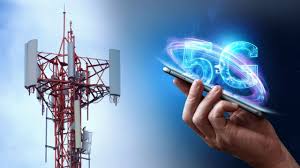The global rollout of 5G networks is gaining momentum, heralding a new era of faster and more reliable connectivity for users around the world. As telecommunications companies continue to invest in infrastructure upgrades and spectrum allocation, the promise of 5G technology is becoming a reality. Let’s explore the latest developments in 5G network expansion and its implications for the future of communication.
Understanding 5G Technology
Evolution from 4G
5G, or fifth-generation wireless technology, represents a significant leap forward from its predecessor, 4G LTE. With faster data speeds, lower latency, and greater capacity, 5G enables a wide range of innovative applications, from augmented reality and virtual reality to Internet of Things (IoT) devices and autonomous vehicles.
Key Features
- Enhanced Speed: 5G offers data speeds up to 100 times faster than 4G, allowing for seamless streaming, gaming, and downloading.
- Low Latency: With reduced latency, or delay, 5G enables real-time communication and responsiveness, critical for applications like remote surgery and connected vehicles.
- Increased Capacity: The expanded capacity of 5G networks supports a higher density of connected devices, paving the way for the proliferation of IoT technologies.
Global Expansion of 5G Networks
Investment and Deployment
Telecommunications companies worldwide are investing billions of dollars in 5G infrastructure to expand coverage and improve connectivity. From urban centers to rural areas, 5G deployment is underway, with network expansion projects accelerating in response to growing demand.
Spectrum Allocation
Governments and regulatory bodies are facilitating 5G deployment by allocating additional spectrum for wireless communication. By opening up new frequency bands, regulators enable operators to deliver faster and more reliable 5G services to consumers.
Impacts and Opportunities
Economic Growth
The widespread adoption of 5G technology is expected to drive economic growth and innovation across industries. From manufacturing and healthcare to transportation and entertainment, 5G-enabled applications have the potential to revolutionize business processes and enhance productivity.
Emerging Technologies
5G networks serve as the foundation for a range of emerging technologies, including the Internet of Things, artificial intelligence, and edge computing. These technologies leverage the speed, capacity, and low latency of 5G to deliver transformative solutions in various domains.
Challenges and Considerations
Infrastructure Upgrades
Expanding 5G coverage requires significant investments in infrastructure, including the deployment of small cells, fiber optic cables, and network equipment. Addressing these infrastructure challenges is essential to ensure widespread access to 5G connectivity.
Security and Privacy
As 5G networks connect an increasing number of devices and applications, concerns about cybersecurity and data privacy become more pronounced. Robust security measures and regulatory frameworks are needed to protect against potential threats and vulnerabilities.
The acceleration of 5G network expansion represents a milestone in the evolution of wireless communication, promising faster connectivity and transformative capabilities for users worldwide. As the rollout continues and technology advances, the full potential of 5G remains to be realized, ushering in a new era of connectivity and innovation.




